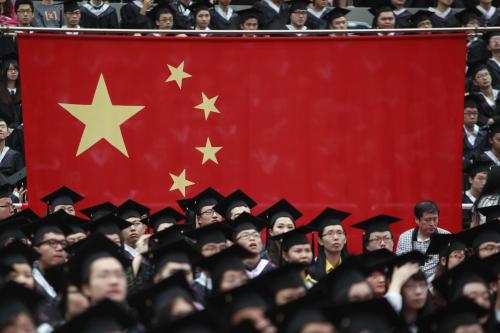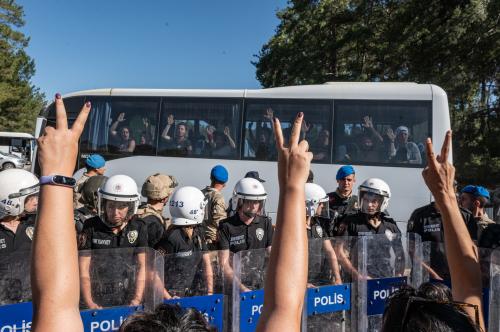Up to two weeks ago it looked like President Barack Obama would be going to Mexico with a very strong hand. Had the gun control measures, which the Obama administration pushed as one of its key domestic issues in the second term, passed in the U.S. Congress, the U.S. President could have arrived in Mexico next week having delivered on a sticky bilateral issue: For more than a decade, successive Mexican presidents have been demanding greater weapons checks and tighter gun control from the United States, with the hope that such measures would reduce the excruciatingly high criminal violence in Mexico.
Mexico’s other long-term demand has been immigration reform: increasing legal job opportunities for Mexican workers, reducing deportations, and allowing Mexican families to travel and connect without great personal security and legal risks. President Obama might yet be in a position to remove the immigration thorn from the U.S.-Mexico bilateral relationship. Clearly, any immigration reform will not pass before he goes to Mexico next week. But he can credibly indicate that his administration has made immigration reform a key domestic priority and that there is more congressional movement on immigration, including on offering a path to citizenship to the millions of undocumented migrants living in the United States, than there has been in years. And at least until the Boston terrorist attacks, it appeared that immigration reform would finally pass in the U.S. Congress. Those opposing immigration reform or demanding a tightening of borders and fail-proof screening that cannot realistically be achieved, are seizing on the Boston attacks as an excuse for derailing the immigration reform legislation. But the prospect of reform is still very much alive.
In addition to gun control and immigration, Mexican President Enrique Peña Nieto will want to talk economics. Upon assuming office last year, he announced that he would like to break out of the Mexico-U.S. relationship being captured in the prism of the drug trade violence and collapsed into anti-crime cooperation, and to have the relationship refocus on global and bilateral trade and energy issues.
But security issues will inevitably be on the agenda, and the discussions may not be easy. For a long time, Washington was suspicious that if the Institutional Revolutionary Party (PRI) which President Peña Nieto leads returned to power, it might be tempted by its old ways —again lessening Mexico’s determination to tackle organized crime and its penetration into Mexico’s law enforcement and administrative institutions and its grip on large segments of Mexico’s society. Since being elected, President Peña Nieto has repeatedly disavowed any negotiations with criminal groups, but he has also maintained that the priority for his government will be not to disrupt drug flows to the United States (as his predecessor President Felipe Calderón sought to do), but to minimize the terrible drug violence in Mexico. Both the reduced focus on disrupting drug flows and the new emphasis on reducing violence, especially should it lead to changed interdiction and targeting patterns in Mexico, might be difficult to sell to Washington and would require the United States to abandon some of its established, albeit often ineffective and counterproductive, international anti-crime and anti-drug policies.
For its part, the new Mexican government has been surprised and made uncomfortable by the extent and tightness of U.S.-Mexico anti-crime cooperation that was established during the Calderón years. Not only has much of the strategic and tactical intelligence for interdiction and other anti-cartel operations come from the United States, but also, and in an unprecedented way, U.S. advisors have become intimately involved in helping to design and shape tactical interdiction operations of several Mexican entities used for anti-cartel law enforcement as well as in reforming law enforcement institutions in Mexico. Conscious of sovereignty, eager to establish tight control of these security institutions, and seeking to redirect Mexico’s security policy to reducing violence, the Peña Nieto administration has been mulling over whether or not and how to shape U.S.-Mexico security cooperation. It needs to take care not to throw the baby out with the bath water. U.S. cooperation, including intelligence provision and law enforcement reform assistance, continue to be greatly valuable for Mexico, and Mexico is hardly in the position to do without them.
For its part, Washington needs to recognize that seeking to reduce criminal violence, including killings, kidnappings, and extortion, is the right priority for Mexico, and indeed, should be a key goal for law enforcement in any country. The United States should wholeheartedly support that objective in Mexico. But achieving violence reduction in Mexico will not be easy, as President Peña Nieto and his security team have already learned in their first six months. Major questions remain about the details, operationalization, and actual implementation of the security strategy Peña Nieto has outlined. As I detail in my report Peña Nieto’s Piñata: The Promise and Pitfalls of Mexico’s New Security Policy against Organized Crime, many components of the new strategy, such as the organizational reshuffle of Mexico’s security institutions, the establishment of a new gendarmerie, or even the youth-crime prevention focus (important as the last element is for any sustainable long-term strategy to reduce criminality) do not easily, quickly, and directly translate into violence reduction in Mexico.
Paradoxically, the policy that is most directly available to Mexico to reduce criminal violence is the one for which it needs the most cooperation from the United States: changing targeting patterns. Instead of deploying the Mexican military or federal police or the gendarmerie (whenever it will actually become available) merely in response to wherever violence intensely breaks out and making cartel capo decapitation the core of its strategy, Mexico needs to prioritize targeting in a way that will reduce violence. That means abandoning both top-level decapitation and reactive deployment of forces. Instead, a wiser interdiction pattern would be more selective and based on an analysis of which law enforcement actions will stimulate what responses and actions from and among the criminal groups. The changed interdiction pattern can include focusing on the most violent group in a particular area and focusing on the middle layer, as opposed to the top capos, of a cartel. As I also explain in another report, Focused Deterrence, Selective Targeting, Drug Trafficking and Organized Crime: Concepts and Practicalities, strategically choosing the basis of prioritized targeting and moving away from interdiction based only ad hoc on how intelligence becomes available requires careful calibration and an uneasy balancing of the pros and cons of each possible option for prioritized interdiction. It often entails uneasy tradeoffs.
Nonetheless, Washington should not define the prioritized interdiction approach (which can mean not vigorously going after some groups for a while) as yet another manifestation of the corruption of Mexican law enforcement institutions by organized crime groups. In turn, explaining to the United States that prioritizing law enforcement actions is smart policy, not weakness and corruption, requires that Mexico maintains extensive discussions with Washington.
What in the long term will increase the rule of law in Mexico is ensuring that communities obey laws, by increasing the likelihood that illegal behavior and corruption will be punished via effective law enforcement, but also by creating a social, economic, and political environment in which the laws are consistent with the needs of the people and allow citizens to embrace their police forces and state presence. Reducing criminal violence is a key element. Adopting a smarter interdiction pattern is an important first step.


Commentary
President Obama’s Visit to Mexico: Key Anti-Crime Issues
April 26, 2013